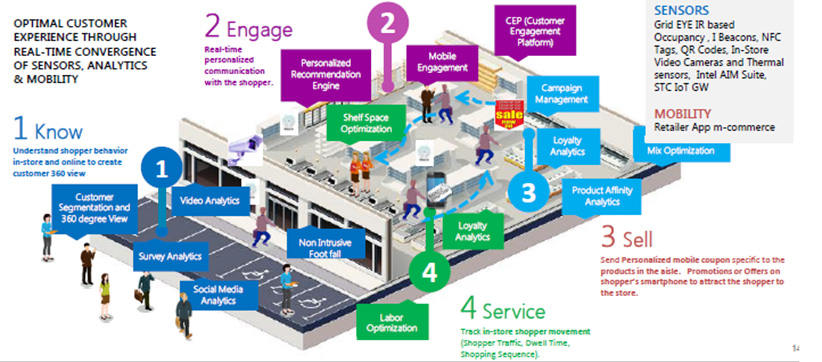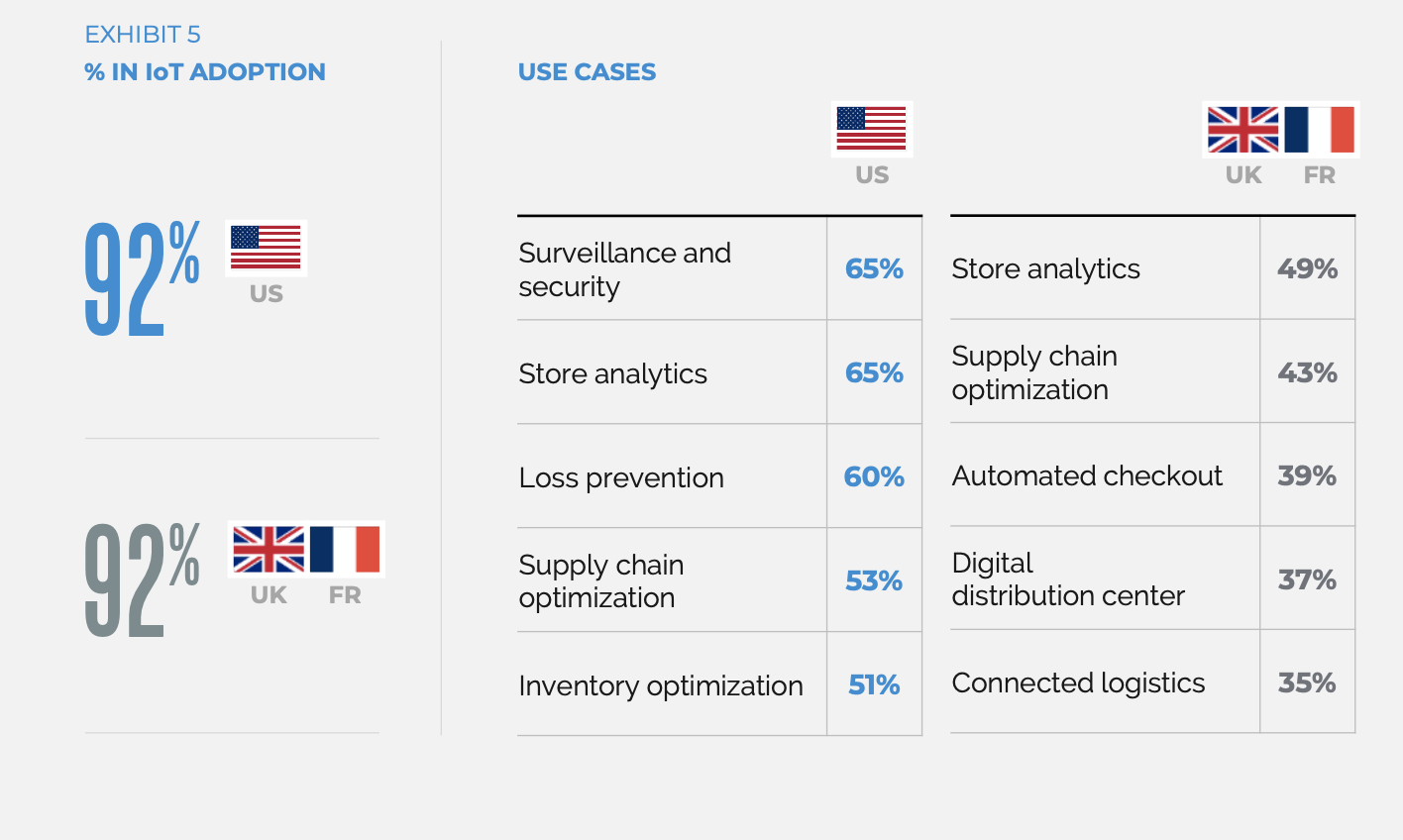Alexis Gambetta
Technology Reporter
Project Counsel Media
17 January 2020 (Paris, France) – At CES 2020 last week, our primary focus was on surveillance technology (our full CES 2020 report will be out over this weekend). And one thing we learned was that retailers across the U.S. and Europe are going “all in” on the internet of things. Whether it’s with cameras that monitor for shoplifters or sensors that track individuals via their smartphone’s Wi-Fi when they step inside a store, retailers are increasingly capturing the data we’re generating in their brick-and-mortar locations. They’re using the data to understand everything from who is buying their products to who is stealing from them to how to better optimize their supply chain.
Almost 9 out of 10 (87%) of retailers consider connected tech inside their stores as critical to their success, and 92% have implemented some form of IoT in their stores, according to a report that Microsoft was distributing at the event. As the chart below indicates, retailers in both the U.S. and Europe are already using the IoT fairly extensively.
That’s not to say that adoption is without its challenges. Microsoft finds that deploying IoT projects at scale is difficult, and that 88% of retailers have had one of their IoT projects fail in implementation. Additional challenges include increased privacy regulations and customer concerns over technologies such as facial recognition.
Wired wrote an excellent article about the new notices popping up in retail stores in California as a result of the newly enacted California Consumer Privacy Act (CCPA). The stores’ signs direct shoppers to websites that tell the consumers they are either being monitored via facial recognition software or being tracked using the identification of their smartphone’s Wi-Fi transmissions. As the the article points out, some retailers are putting these notices in relatively nondescript locations in the store — or are forgoing posting them altogether. We also learned about the number of ways retailers are getting around the CCPA which we’ll share next week.
And while cameras are one of the technologies retailers are using, they aren’t the only one, or perhaps even the dominant one. Profitect, a company purchased last year by Zebra Technologies, makes analytics software that tracks items using RFID tags as they move throughout the store. The software can determine if the items are behaving “normally” — such as by traveling through an aisle, stopping at a checkout counter, and then leaving — or in an “abnormal” fashion, such as by sitting idly behind a counter or in a storage area before being carried off-premise.
Profitect helps stores manage and detect problems using cameras. But as CEO Guy Yehiav told us at the event, there are many other products out there designed to help retailers that aren’t using facial recognition systems. Profitect customers such as Home Depot are using more basic analytics at cash registers, for example, or looking at past purchases by an individual to determine if there’s fraud at play.
And while fraud and face detection tech might make headlines, most of IoT in stores is used for more quotidian purposes. According to Microsoft’s report, in the next two years we’ll see 50% of retailers offer some form of automated self-checkout, up from 37% today. We’ll also see better inventory management, with smart shelving systems. The use of such systems will rise from 39% today to 49%. Smart shelving systems use tags on products, cameras, and even sensors to detect when products are out so the software can alert an employee that they need to be re-stocked.
In the store of the future, you’ll no longer have to flag someone down and ask if they have your favorite granola, or if they can find the sweater you want in another size “in the back.” You may no longer have to interact with a cashier, either. Instead you’ll have the chance to check yourself out, using the self-scanning systems already in widespread use today or perhaps even the more highly automated systems in place at the Amazon Go stores, where you walk in, pick your items, and walk out, all while a camera tracks your purchases and charges your account.
Though while in theory, IoT and analytics may make it more difficult for shoplifters or employees who have sticky fingers to take what they want, I have a hunch that more organized criminals will find ways around the current systems. Humans adapt to technology as much as technology adapts to us.

